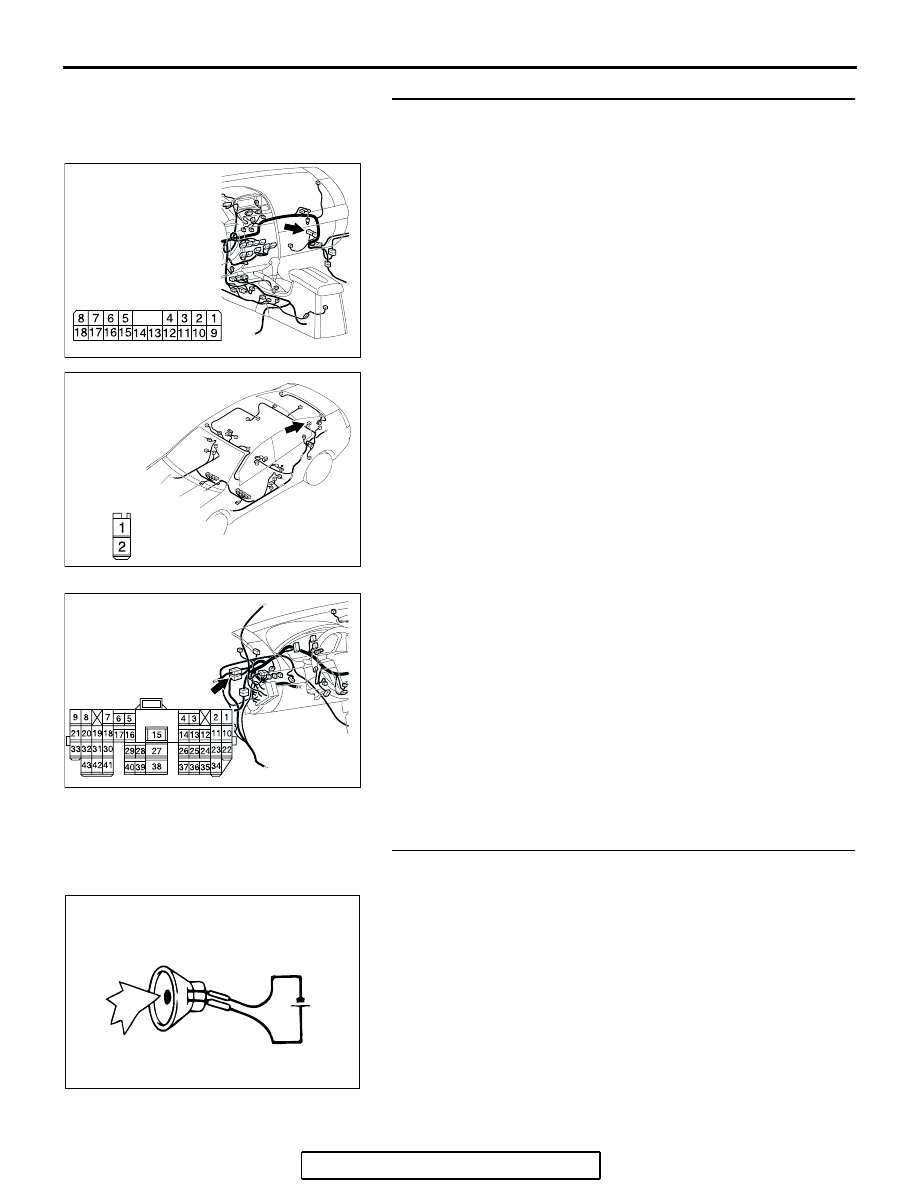Content .. 1575 1576 1577 1578 ..
Mitsubishi Galant 9G. Manual - part 1577

RADIO WITH CD PLAYER
TSB Revision
CHASSIS ELECTRICAL
54A-180
STEP 16. Check the wiring harness between rear speaker
(LH) connector D-12 (terminals 1 and 2) and audio
amplifier connector C-113 (terminals 2 and 10).
NOTE: Also check intermediate connector C-28 for loose, cor-
roded, or damaged terminals, or terminals pushed back in the
connector. If intermediate connector C-28 is damaged, repair or
replace the connectors as described in GROUP 00E, Harness
Connector Inspection
.
Q: Is the wiring harness between the rear speaker (LH)
connector D-12 (terminals 1 and 2) and audio amplifier
connector C-113 (terminals 2 and 10) in good condition?
YES : Replace the audio amplifier. The rear speaker (LH)
should sound.
NO : Repair the wiring harness. The rear speaker (LH)
should sound.
STEP 17. Check the rear speaker (RH).
(1) Remove the rear speaker (RH). Refer to
(2) Check that the rear speaker (RH) generates noise when a
five-volt voltage is applied on the rear speaker (RH)
terminal.
Q: Is the rear speaker (RH) generating noise?
YES : Go to Step 18.
NO : Replace the rear speaker (RH). The rear speaker
(RH) should sound.
AC305233CC
CONNECTOR: C-113
HARNESS SIDE
AC305268
AU
CONNECTOR: D-12
HARNESS SIDE
AC305231AE
CONNECTOR:C-28
ACX01868AB
5V